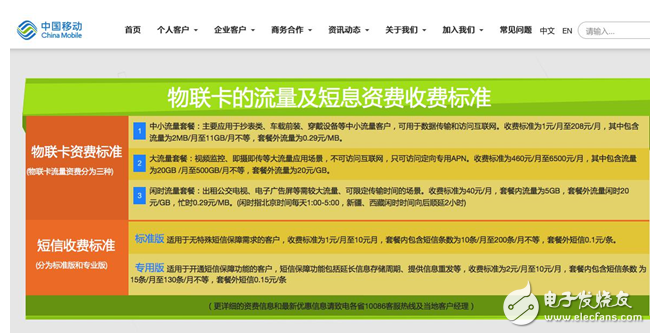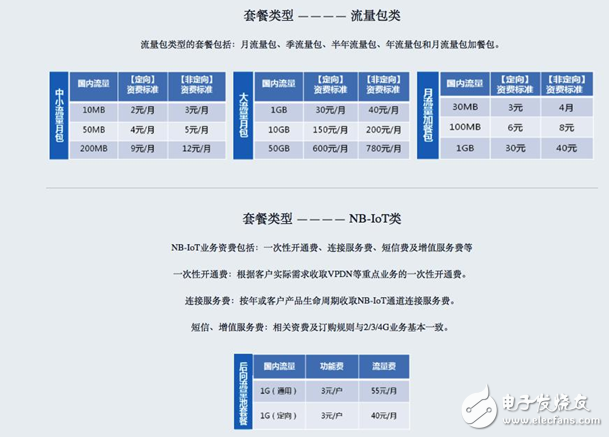The best way to develop the Internet of Things, the major operators are very interested in this, the Internet of Vehicles is an important part of the Internet of Things, so domestic operators began to deploy on the Internet of Vehicles, according to market statistics, by 2020 The scale of China's car networking market will exceed 50 billion yuan, and the growth space is huge. But one problem is that the operator's car networking technology is advancing by leaps and bounds, but the tariff package is not attractive.
To this end, both foreign operators and domestic operators have early layout in the vehicle network market, such as strategic cooperation with car companies, research and development of communication technologies suitable for car networking, and discussion of business models. Especially with the maturity of V2X technology standards, the enthusiasm of operators in the Internet of Vehicles has once again increased, and began to cooperate with other companies for testing and testing.
However, at present, unmanned driving is difficult to commercialize in a short period of time. At this stage, the car networking services in the market are to control the multimedia system of the car and some car units such as doors, windows and air conditioners. It is not strict with network quality requirements, but individual consumers are very sensitive to price. However, the price of the car network package offered by the three major operators is almost the same as that of the mobile phone package. It is even more expensive than the specific packages such as Internet packages and unlimited traffic packages. This has also caused many people to use the car on the phone hotspot.
Strategic early layoutIn fact, as early as 2012, domestic operators began to deploy on the Internet of Vehicles. For example, in August 2012, China Telecom and the Shanghai Municipal Government signed a strategic cooperation agreement to jointly build a “smart city†in Shanghai. China Telecom takes the vehicle services such as commercial vehicles, passenger cars and new energy vehicles as the entry point to jointly carry out research and exploration on the car networking and in-vehicle information service projects in Shanghai. Moreover, the "China Telecom Car Network Service Shanghai Base" was subsequently listed in Shanghai.
In October 2012, China Mobile Internet of Things Co., Ltd. officially listed in Chongqing, focusing on the car networking business. In the same year, China Mobile launched a new type of car networking product in Shandong for private cars and some industry users - "Worry-free" smart terminals. In October 2014, China Mobile and Deutsche Telekom signed a joint venture agreement to establish a car network joint venture company. In April 2014, China Unicom and Ireland's Cubic Telecom signed a cooperation agreement to jointly provide Tesla with comprehensive solutions for automotive information and provide automotive information services for Tesla users in China.
Today, the three major operators have established cooperative relationships with almost all major car companies, and actively promote the standardization and commercialization of V2X technology. For example, China Mobile has set up a car networking working group in NGMN, and simultaneously promoted the domestic LTE-V2X car networking standard in CCSA; and promoted the relevant national ministries and commissions to issue LTE-V2X vehicle networking test spectrum. At the same time, China Mobile is also actively promoting the LTE-V2X technology test. In 2016, with SAIC and Huawei, the LTE-V2X key technology test was carried out in Yunqi Town, Hangzhou, covering all application scenarios of V2X, and successfully demonstrated during the G20 Summit, initially verifying the feasibility and advancement of LTE-V2X technology.
Existing price packages have no obvious advantageWith the continuous increase of car penetration rate in China and the development of intelligent car, the future car will be as easy to use as mobile phones, and its demand for Internet access will continue to increase. This will also allow people to constantly pursue affordable Internet access tariff packages.
However, the current reality is that after the individual buys the car, the free networking experience that will be given away by the car is used up, and is no longer used. When there is navigation or entertainment, the mobile phone or the mobile phone is directly connected to the car.
The main reason for this situation is that the tariff is high, the frequency of use of the car is far less than that of the mobile phone, and it is not cost-effective to customize the large-scale package. At the same time, the trouble of replacing the SIM card is bound by the operator and the car enterprise.
According to the operator's official website information, the China Mobile Internet of Things card fee is 1 yuan / month to 208 yuan / month, the flow rate is 2M / month to 11G / month, the package outside traffic is 0.29 yuan / M.

The China Telecom IoT package is divided into non-directional and directional traffic. The tariffs range from 2 yuan/month to 600 yuan/month, and the traffic ranges from 10M/month to 50G/month. Non-directional traffic ranges from 3 yuan/month to 780 yuan/month, with flows ranging from 10M/month to 50G/month.

It is not difficult to see that compared to the current mobile phone tariffs, especially the various unlimited packages and Internet packages, the Internet of Things package tariff system is not competitive.
Since the beginning of this year, smart connected cars are becoming the focus of major auto companies, and they have also become an important consideration for consumers to choose cars. For the current car, the multimedia system is the device with the highest frequency and the highest usage rate. Compared with the network quality requirements such as low latency, the tariff is undoubtedly the user's concern. After all, there are so many cheap package tariff products on the market, why consumers need to choose uncompetitive packages. However, for operators to first stand the pit of the Internet of Vehicles is undoubtedly the key to future development.
600 Puffs Disposable ecig have a completely enclosed design, reducing the need for charging and replacing cartridges. The no-charge design also reduces the occurrence of faults. It is understood that with rechargeable e-cigarettes, each cartridge needs to be charged at least once and the battery efficiency is extremely low, while the design of disposable ecig can solve this problem very well.
600 Puff Disposable Vape,600 Puff Disposable Vape For Sale,Best Puff Disposable Vape
Shenzhen E-wisdom Network Technology Co., Ltd. , https://www.healthy-cigarettes.com
![<?echo $_SERVER['SERVER_NAME'];?>](/template/twentyseventeen/skin/images/header.jpg)